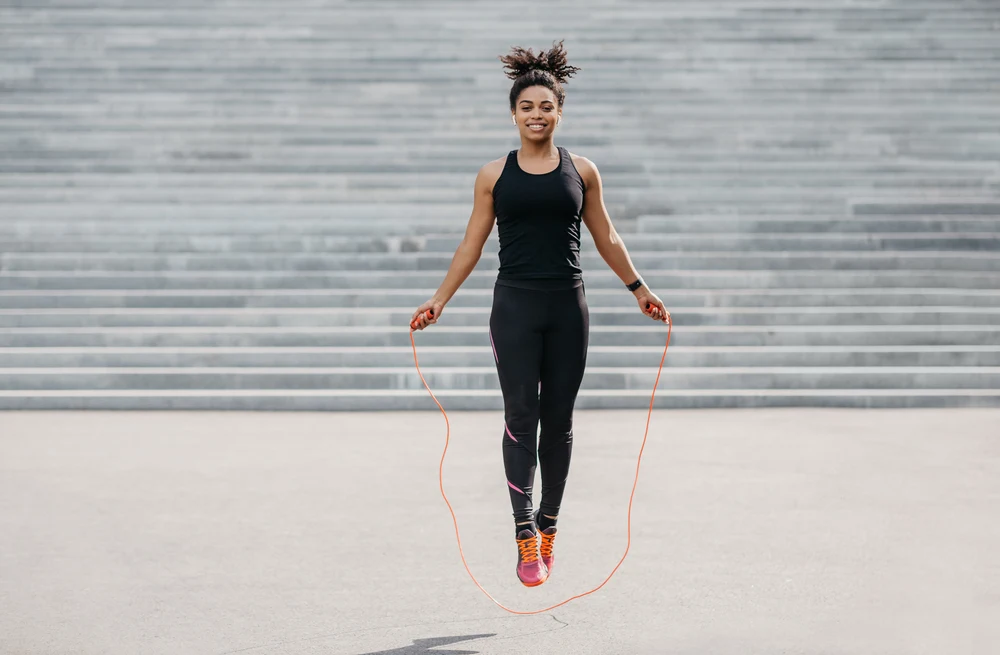
One shift that can be challenging for men to understand is how their sexual drive might wax and wane over time.
"Sexual desire is no longer a light switch that can be quickly turned on or off for many males. However, that's understandable given that "men need to rethink what they consider to be 'normal' when it comes to sex drive and understand that it is okay when it changes.
"Sexual desire is no longer a light switch that can be quickly turned on or off for many males. However, that's understandable given that "men need to rethink what they consider to be 'normal' when it comes to sex drive and understand that it is okay when it changes.
Do the math.
As a guy gets older, a variety of things can impact his sexual drive. For instance, the male sex hormone testosterone normally drops after the age of 50, and erectile dysfunction (ED) rises in prevalence. Desire can also be impacted by health conditions. (Read "Take good care of yourself.")
Misguided expectations are another barrier that men must overcome. "Look at almost any ED drug advertisement." The overarching message is that guys in their 60s and 70s should act and feel like they are still in their 30s or 40s.
She continues, expecting that if men in their midlife and beyond don't act or feel a certain way most of the time, something must be wrong or broken, which frequently trips them up. "They are vulnerable to further annoyance when they have unrealistic expectations about how their sex life should look or feel."
Self-care is important.
Numerous medical disorders, including obesity, diabetes, heart disease, high blood pressure, and high cholesterol, might have an impact on sex drive. "If you want to stay sexually active, you have to be diligent about working out frequently, eating right, and getting regular checkups from the doctor."
Putting it to work
The evolving desire for sex can be embraced in a variety of ways. Consult your doctor first about any physical or medical conditions that can impair desire or to see whether raising testosterone levels would be beneficial.
Thus emphasizing sex's non-physical aspects. Focusing more on romance and re-engaging with your lover is an excellent method to help reignite the sexual spark for both of you. As you get older, "Sex and intimacy can mean many things. She suggests attempting the following methods including how to increase your sex life:
The U.S. Preventive Services Task Force, an independent national panel of experts, has recently released draft guidelines proposing updated recommendations for breast cancer screening. The new guidelines suggest that women at average risk for breast cancer should undergo screening every other year starting at the age of 40. This is a departure from their previous advice, which recommended mammograms every other year starting at age 50. The proposed guidelines are in line with the 2022 recommendations by the National Comprehensive Cancer Network, which suggests annual mammograms for women at average risk.
The decision to update the guidelines was based on new scientific evidence that shows biennial mammograms starting at age 40 could potentially prevent at least one additional breast cancer death for every 1,000 women. Currently, breast cancer affects approximately 264,000 American women each year, with 42,000 losing their lives to the disease, according to data from the CDC.
The human face is not just a means of communication and social interaction, but it also serves as a remarkable shield against the potential dangers of the world around us. From our eyes to our nose and mouth, each facial feature contributes to safeguarding our bodies in surprising ways.
Let's begin with our eyes, which play a vital role in keeping us safe. With two eyes positioned forward, we gain depth perception and a broader field of vision, allowing us to perceive our surroundings more accurately. Moreover, our eyebrows serve as guides, diverting debris, sweat, rainwater, or any substances away from our eyes. Additionally, they play a key role in conveying our emotions. Just observe how the positioning of eyebrows changes when a person is angry, surprised, or fearful. Acting as guardians, our eyelashes prevent dust, sweat, and other irritants from entering our eyes, while also providing a tactile warning of objects approaching them. The cornea, a transparent outer layer of the eye, not only shields it from potential harm but also enables the passage of light for optimal vision.
Moving on to the nose, its primary function of smelling pleasant scents is complemented by its role as an alarm system. A well-developed sense of smell can be life-saving, alerting us to gas leaks or spoiled food. Additionally, the nose warms and humidifies the air we breathe, preventing irritation to our delicate lungs. It also filters larger particles, such as dust and soot, through the presence of nose hairs. The nasal lining acts as a defense mechanism, housing immune cells that combat toxic particles, viruses, and other intruders. Furthermore, it produces protective mucus, which traps small particles and prevents nasal passages from drying out. Sneezing acts as a natural expulsion mechanism, expelling microorganisms or chemical irritants through the nose.
Plyometrics are dynamic exercises that can help improve strength, power, balance, and agility. It's important for beginners to start slow and with simple exercises.
What are plyometrics?
Plyometric training involves engaging in short, intense bursts of activity that specifically target fast-twitch muscle fibers in the lower body. These fibers play a crucial role in generating explosive power, which can enhance speed and jumping ability.
Competitive athletes in sports like basketball, volleyball, baseball, tennis, and track and field often incorporate plyometrics into their training routines. Additionally, plyometrics can also enhance coordination, agility, flexibility, and provide a great cardiovascular workout.
Who can safely try plyometrics?
There are various types of plyometric exercises, and many people are familiar with gym plyometrics that involve jumping onto boxes or over hurdles. However, these advanced moves should only be attempted under the supervision of a trainer once you have developed some skills and muscle strength.
It's essential to note that even the beginner-level plyometrics mentioned in this article can be challenging. If you have experienced joint issues, particularly in the knees, back, or hips, or struggle with balance, it's advisable to consult with your doctor before attempting any plyometric training.
How to maximize effort while minimizing the risk of injury
To ensure safety during plyometric exercises, consider the following tips:
1. Choose a surface with some elasticity. Opt for a thick, firm mat (not a thin yoga mat), a well-padded carpeted wood floor, or grass/dirt outdoors. These surfaces can absorb some of the impact upon landing. Avoid jumping on hard surfaces like tile, concrete, or asphalt.
2. Start with small jumps. Begin by jumping just a few inches off the ground. Remember, the higher you jump, the greater the impact upon landing.
3. Maintain proper form. Bend your legs when you land and avoid locking your knees. Aim to land softly, distributing the impact throughout your feet rather than solely on your heels or toes.
When individuals are subjected to shift work, their sleep patterns and overall well-being can be significantly affected. This article explores the consequences of nontraditional shift work schedules on individuals' health, emphasizing the importance of restful sleep for optimal health. The article also highlights the connection between shift work and various health issues, including metabolic syndrome, accidents, and certain types of cancer. Furthermore, it discusses recent studies that contribute to a deeper understanding of the health effects associated with shift work.
Shift Work Disorder and its Health Implications:
Shift work disorder primarily affects individuals who work overnight or early morning shifts, or those who rotate their shifts. This disorder is characterized by significant difficulties in falling asleep, staying asleep, or sleeping when desired. The disruption of the body's natural circadian rhythm, the 24-hour sleep-wake cycle, is the main cause of these sleep-related problems in shift workers.
The Link Between Shift Work and Health:
Extensive research, including recent studies, has revealed a concerning association between nontraditional shift work schedules and various health risks. Studies have shown that shift work increases the likelihood of serious health problems such as heart attacks, diabetes, accidents, and certain types of cancer. The consistent and compelling evidence indicates that extended periods of working and sleeping during hours misaligned with natural light patterns have unfavorable effects on health.
Insights from Recent Studies:
Recent studies have further enhanced our comprehension of the health implications associated with shift work. Findings suggest that shift workers on rotating schedules tend to display irregular eating habits, consume more snacks at night, and have a lower intake of healthier foods. Additionally, disrupting the circadian rhythm through shift work appears to increase the risk of colorectal cancer, potentially due to exposure to artificial light at night and complex genetic and hormonal interactions.
Have you ever wondered about tics and their intriguing nature? Tics, which are sudden and involuntary movements or sounds, are more common than you might think. In fact, approximately one in every five children experiences tics at some point in their lives. These can manifest as simple motor tics like shrugging, finger tapping, or making facial grimaces. Alternatively, tics can be vocal, such as uttering words, grunting, or clearing the throat.
Sometimes, tics can become more complex, involving unusual walking patterns, repetitive phrases, or echoing others' words, a condition known as echolalia. Although tics are involuntary, some individuals can suppress them to some extent. Interestingly, tics can be temporary or long-lasting, with one-third of cases completely disappearing, another third improving over time (often without treatment), and the remaining third becoming chronic.
Now, let's explore a specific tic disorder known as Tourette syndrome (TS). TS is diagnosed when someone experiences both motor and vocal tics persistently for over a year, starting in childhood. The exact prevalence of TS remains uncertain, as many cases go undiagnosed. However, the Centers for Disease Control and Prevention (CDC) estimates that TS affects approximately one in every 162 children. Notably, TS is four times more common in boys than in girls.
While the precise causes of Tourette syndrome are not yet fully understood, researchers believe that genetic, psychological, and environmental factors all play a role. It is worth noting that many individuals with TS also have comorbid conditions like attention deficit hyperactivity disorder (ADHD) or obsessive-compulsive disorder (OCD). Additionally, stress, fatigue, and excitement can exacerbate tics. Recent years have seen an increase in functional tic disorders among teenagers who have been exposed to videos of others with tics on social media.
Typically, Tourette syndrome emerges between the ages of 2 and 15, with an average onset around 6 years old. However, TS can also appear during the teenage years. Although TS tends to improve or completely resolve during adolescence and adulthood, it can present significant challenges for affected children. Individuals with TS are at higher risk of experiencing anxiety, academic difficulties, sleep problems, mood disorders, and even suicidal thoughts.
Subscribe to:
Posts (Atom)




